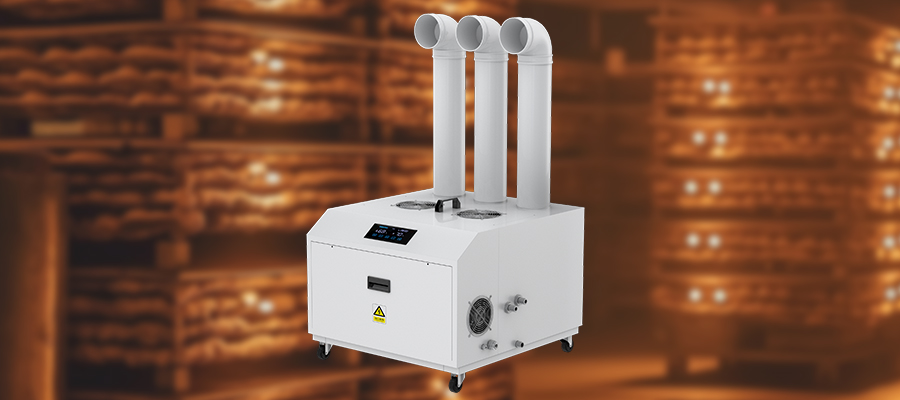


I. Overview of Ultrasonic Humidifiers
An ultrasonic humidifier is an advanced humidification device that uses high-frequency vibration to atomize water molecules into micron-sized particles.
The humidification capacity ranges widely (3kg/h - 120kg/h), capable of meeting various needs from households to industries. Its core component, the piezoelectric
ceramic sheet, through millions of high-frequency vibrations per second, decomposes water into fine water mist of 1-5 micrometers, which is evenly dispersed into the air by the fan.
II. Core Advantages and Features
High efficiency and energy saving: Compared to traditional humidification methods, it saves 30% - 50% of energy. It can achieve rapid humidification without heating.
Precise humidity control: Combined with an intelligent control system, it can achieve a humidity accuracy of ±3% RH.
Silent operation: The working noise is generally lower than 40 decibels, suitable for quiet environments.
Instant start and use: No preheating required, with fast response speed.
Easy maintenance: Modular design, convenient for cleaning and maintenance.

III. Humidity Level Selection Guide
To select the appropriate humidity level, the following factors need to be considered comprehensively:
Space volume: Approximately 1-1.5 kg/h of humidity is required for every 100 cubic meters of space (base value)
Environmental temperature: For every 5℃ increase in temperature, the humidity requirement increases by 20%
Ventilation condition: A 20% change in ventilation rate per hour doubles the humidity requirement
Target humidity: For every 10% increase in relative humidity, the humidity requirement increases by 15%-20%
Calculation formula: Base humidity level × Temperature coefficient × Ventilation coefficient × Humidity coefficient + 15% safety margin
IV. Typical Application Scenarios
Industrial sector: Electronic factories, printing workshops, textile mills, etc. (usually requiring 20-120 kg/h)
Agricultural applications: Greenhouses, edible fungus cultivation, etc.
Commercial venues: Data centers, museums, libraries
Home use: Bedrooms, living rooms (3-10 kg/h)
V. Application Examples of Mushroom Cultivation Rooms
In mushroom cultivation, different growth stages have strict requirements for humidity:
Fungal cultivation stage: 85% - 90% RH is needed
Hanging mushroom stage: 80% - 85% RH is needed
Harvesting stage: 75% - 80% RH is needed
Let's calculate based on a 200-square-meter planting room (3 meters high):
Base volume: 600 m³ → Base humidification rate 6-9 kg/h
High-temperature correction (25℃): Coefficient 1.2 → 7.2-10.8 kg/h
Ventilation correction (2 exchanges per hour): Coefficient 3 → 21.6-32.4 kg/h
High humidity correction (85% RH): Coefficient 1.8 → 38.9-58.3 kg/h
Add 15% margin → 45-67 kg/h
It is recommended to choose a humidification system with a flow rate of around 50 kg/h, or to use a combination of multiple 20-30 kg/h units to achieve
precise control in different areas.

VI. Usage Suggestions
Regularly clean the water tank to prevent the growth of bacteria
It is recommended to use pure water or softened water to reduce the occurrence of "white powder".
The installation location should ensure uniform distribution of the fog particles.
A humidity sensor should be equipped for automatic control.
The ultrasonic humidifier, with its outstanding performance and flexible configuration, has become the mainstream choice in the field of modern humidification.
Correct selection and use can significantly improve the humidity control level in various industries, creating a better production and living environment.